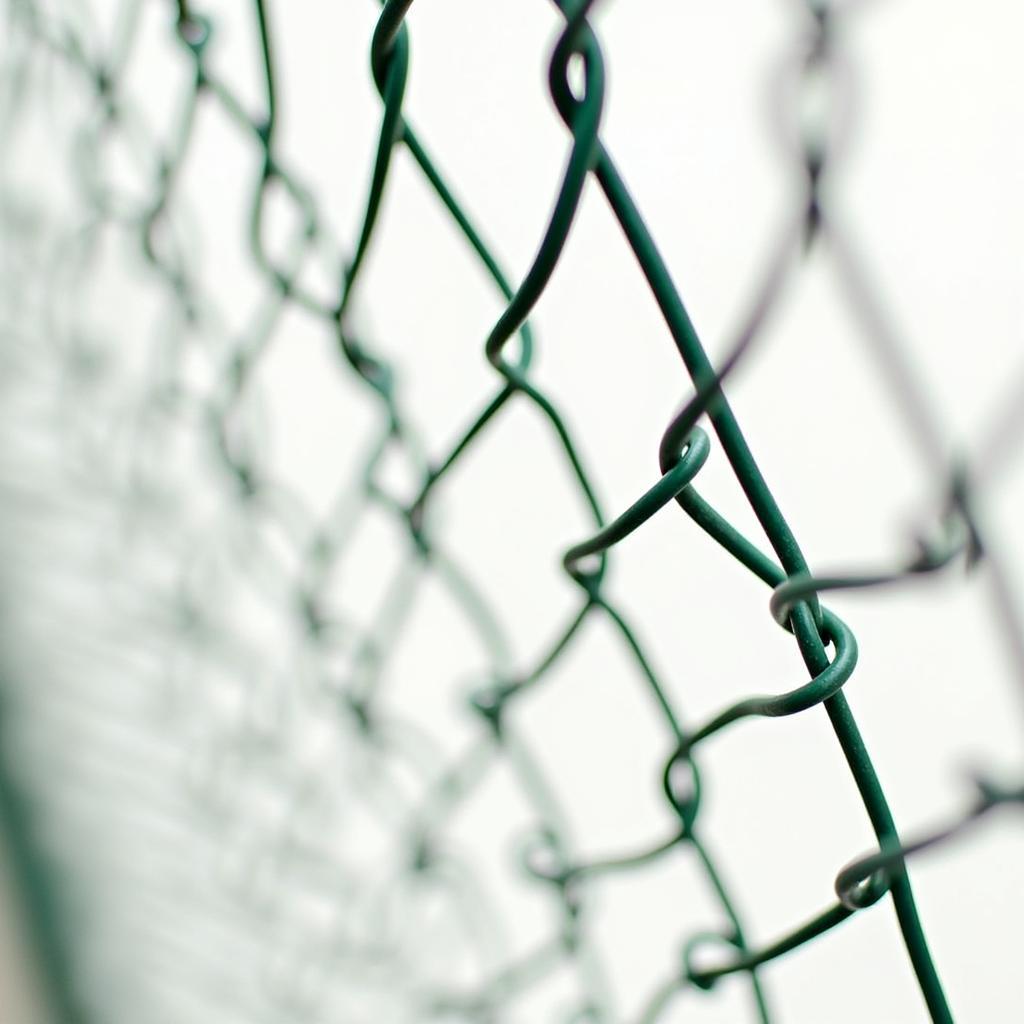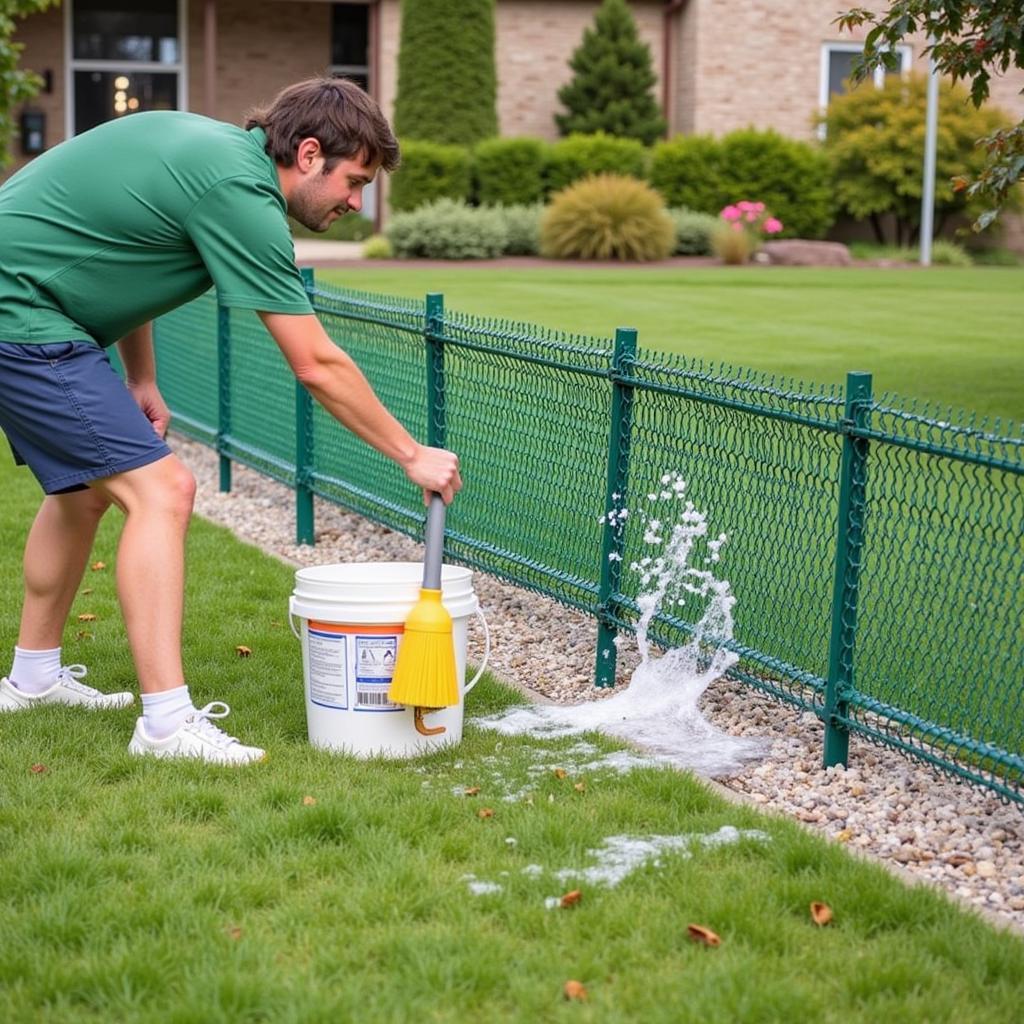Flex Fence For Horses offers a safe and adaptable solution for containing your equine companions. This fencing option provides a blend of security and flexibility, making it a popular choice among horse owners. Let’s explore the advantages, installation processes, and maintenance tips for flex fence to ensure your horses are safely and comfortably contained.
 Close-up view of a flex fence for horses, showcasing its durability and flexibility.
Close-up view of a flex fence for horses, showcasing its durability and flexibility.
Understanding the Benefits of Flex Fence
Flex fence, also known as polymer rail fence or vinyl rail fence, provides a number of advantages over traditional fencing materials like wood or wire. It’s highly visible, reducing the risk of horses running into it. The smooth surface minimizes the chance of injury compared to barbed wire. Plus, flex fence is incredibly durable and requires minimal maintenance, saving you time and money.
 Installing flex fence posts and rails for a horse pasture.
Installing flex fence posts and rails for a horse pasture.
Flex fence is an excellent option for temporary fence for horses, especially if you are showing or competing and need a quick and reliable fencing solution. Its flexibility makes it easy to adapt to different terrains and configurations. Want to create a smaller paddock within your existing pasture? Flex fence can handle that.
Installation Guide for Flex Fence
Proper installation is key to ensuring the effectiveness and longevity of your flex fence. Begin by planning your fence line and marking post locations. The distance between posts will depend on the terrain and the manufacturer’s recommendations. Generally, posts should be spaced 8-12 feet apart. Ensure that you use sturdy posts that are designed to withstand the tension of the flex fence. Once your posts are set, begin attaching the rails, ensuring they are taut but not overly stretched.
Step-by-Step Installation Process
- Plan and Measure: Measure the perimeter of the area you want to enclose.
- Mark Post Locations: Use stakes and string to mark the locations for your posts.
- Install Posts: Dig holes and set the posts securely in concrete.
- Attach Rails: Attach the flex fence rails to the posts using appropriate hardware.
- Tension the Rails: Use a tensioning tool to tighten the rails to the recommended tension.
- Check for Stability: Walk along the fence line to check for any weak points or gaps.
Dr. Amelia Shepherd, a renowned equine veterinarian, emphasizes the importance of proper installation. “A well-installed flex fence will not only contain your horses securely but also prevent injuries that can occur with poorly maintained or inadequate fencing.”
Maintaining Your Flex Fence
Flex fence is known for its low maintenance requirements. Unlike wood, it doesn’t need painting or staining. Regular cleaning with soap and water is usually sufficient to keep it looking its best. Check your fence regularly for any signs of damage, such as cracks or loose rails. Address any issues promptly to prevent more significant problems down the road.
 Cleaning flex fence with soap and water to maintain its appearance and longevity.
Cleaning flex fence with soap and water to maintain its appearance and longevity.
If you’re considering mesh horse fence, remember that it offers different benefits compared to flex fence. While mesh is excellent for visibility and airflow, flex fence provides a more substantial barrier and aesthetic appeal. For those interested in training aids, single trees for horses are an excellent resource.
Conclusion
Flex fence for horses is a versatile and durable fencing option that provides a safe and attractive enclosure for your equine companions. Its easy installation and low maintenance make it a practical choice for horse owners. By following the proper installation and maintenance procedures, you can ensure that your flex fence provides years of reliable service.
FAQ
- Is flex fence safe for horses? Yes, when installed correctly, flex fence is a safe and effective containment option for horses.
- How much does flex fence cost? The cost varies depending on the brand, height, and length of the fence.
- How do I repair damaged flex fence? Minor damage can often be repaired with specialized repair kits. For more extensive damage, consult a fencing professional.
- What is the lifespan of a flex fence? With proper maintenance, a flex fence can last for many years.
- Can I install flex fence myself? Yes, with the right tools and instructions, flex fence can be a DIY project.
Scenarios
- Large Pasture: Flex fence can be used to create large pastures for horses to roam freely.
- Small Paddocks: It’s also ideal for creating smaller paddocks for individual horses or for rotational grazing.
- Arena Fencing: Flex fence is suitable for enclosing arenas for training and riding.
Further Reading
For more information on horse care and products, check out our articles on liquid bandage for horses and electric horses.
Need help with your horse fencing project? Contact us at Phone Number: 0772127271, Email: [email protected] Or visit our address: QGM2+WX2, Vị Trung, Vị Thuỷ, Hậu Giang, Việt Nam. We have a 24/7 customer service team.